Indicators That You Need a Water Quality Test
November 13, 2024
5 Plumbing Tools Every Homeowner Should Have
January 17, 2025Winter in Kelowna can bring unpredictable temperatures and conditions that affect your home’s plumbing. Preparing your plumbing for cold weather can save you from the inconvenience and cost of repairs and keep your home energy efficient and comfortable. Here’s a simple guide on how and when to winterize your plumbing system to ensure your home is well-prepared for winter.
1. Start Early to Avoid Frozen Pipes
Frozen pipes can lead to serious water damage, and prevention is key. Before temperatures drop, check that all exposed pipes are properly insulated. Outdoor hoses should be disconnected, and any sprinkler systems should be fully drained to prevent ice from forming. Weather stripping and door sweeps can keep warm air from escaping and reduce heat loss, so it’s also wise to check and seal doors and windows to keep your home insulated.
Tip from Kelowna Plumbing: If you need assistance insulating pipes or draining systems, Kelowna Plumbing offers full winterization services.

2. Drain Outdoor Water Sources
Outdoor water sources can be one of the first to freeze, causing damage. Drain garden hoses and disconnect them, then store them indoors. If your home has a dedicated shut-off valve for outdoor faucets, turn it off to prevent freezing.
Winterize sprinkler systems by draining them and blowing out any remaining water. Some homeowners may also add furnace filters for improved air quality when they close up their home for the winter, which is especially helpful in cold weather when air is trapped inside.
3. Inspect and Insulate Your Water Heater
Your water heater has to work harder in the winter, especially if it’s located in a colder area like a basement or garage. Consider insulating the water heater and any nearby pipes. This extra layer helps reduce heat loss and can make the unit more energy efficient. If your heater is over 10 years old or showing signs of wear, consider having it serviced or replaced before winter hits.
Note: Regular maintenance on your water heater not only prevents breakdowns but also keeps energy bills manageable. Kelowna Plumbing can help inspect and insulate water heaters to prepare them for winter weather.
4. Upgrade to a Programmable Thermostat
Maintaining a steady temperature can prevent pipes from freezing, especially when temperatures drop overnight. A programmable thermostat helps keep the heat on at a lower cost by reducing unnecessary heating when you’re away but increasing warmth when you’re home. By setting the temperature on a timer, you maintain warmth in critical areas of the home, which can help prevent pipe damage.
5. Check Your Carbon Monoxide Detectors
Many homes increase their use of heating systems like furnaces, fireplaces, and space heaters in winter. Carbon monoxide detectors are critical for monitoring indoor air quality and keeping your family safe. Test each detector in your home, replace any outdated units, and change the batteries if needed.
6. Seal Gaps Around Doors and Windows
Cold air often seeps in through gaps in doors and windows, increasing heat loss and the risk of cold spots that can lead to frozen pipes. Seal these gaps using weather stripping and door sweeps. Not only does this keep warm air inside, but it also reduces energy bills by making your home more energy efficient.
Quick Tip: For gaps in other parts of the home, such as in the garage or attic, consider applying extra insulation or caulking. This adds a layer of protection for both plumbing and heating.
7. Regularly Clear Snow and Ice
Heavy snow and ice buildup can damage plumbing fixtures and outdoor components. Snow shovels are your best defence for clearing pathways, driveways, and walkways around your home. Also, be mindful of roof snow that can create an ice dam, which could damage shingles and lead to leaks that reach plumbing and wiring. Clearing snow and ice regularly keeps access points to your plumbing, HVAC units, and outdoor faucets clear and safe.
8. Prepare Your Heating System
Your heating system plays a major role in keeping your home comfortable and your pipes from freezing. Consider having your furnace serviced and replacing furnace filters before the weather turns cold. This reduces the risk of breakdowns, improves airflow, and increases energy efficiency. A well-maintained heating system efficiently keeps your home warm and helps avoid costly repairs by keeping pipes at safe temperatures.
9. Consider Your Home Insurance Coverage
A sudden burst pipe or furnace failure can be costly, so it’s worth reviewing your home insurance coverage to make sure you’re protected. Many home insurance policies cover water damage from frozen pipes but may require that you took reasonable steps to winterize. By keeping pipes insulated, maintaining heating, and securing your plumbing, you’re both protecting your home and ensuring peace of mind
10. Keep a Checklist for Ongoing Winter Maintenance
Winterizing is not a one-time task. Regular checks throughout the winter can prevent emergencies and keep your plumbing in peak condition. From checking pipes and furnace filters to testing carbon monoxide detectors, a quick maintenance routine can make a big difference.
Pro Tip:Kelowna Plumbing offers winter maintenance services to ensure your plumbing system is safe and efficient throughout the cold months.
Wrapping Up
Winterizing your plumbing is a smart investment in your home’s health and your own peace of mind. By taking these simple steps, you’re preparing your home for winter and reducing the risks associated with cold weather. If you need expert help or guidance on winterizing, Kelowna Plumbing is here to support you with tailored services for every part of your plumbing system.
However, If you require emergency plumbing, we are only a call away! Don’t let a weather-related plumbing emergency ruin your day — or your home.





